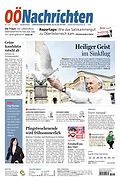This was stated in a document signed by Pope Francis and published by the Vatican on Friday. In addition to the new categories for evaluation, the Vatican's Office for the Doctrine of the Faith in Rome will have the final say on supernatural phenomena.
Guidelines from 1978
Due to the increase in false rumors and the spread of fake news on the Internet, the existing guidelines from 1978 are no longer useful and practical, and the powerful religious council has justified its decision to fundamentally revise the standards. There is also a risk that scammers will try to make money and manipulate people through alleged miracles or other phenomena. The Vatican's new standards aim to prevent these risks.
Six different categories
Whereas previously it was possible to evaluate whether a miracle occurred or not, there must now be six different categories for evaluating supernatural phenomena. In the best-case scenario, the alleged miracle falls under the category of “Nihil obstat” (in German: “nothing stands in the way”). According to the information, this means that although there is no certainty about supernatural authenticity, there are signs of the work of the Holy Spirit. Believers can freely revere and appreciate this phenomenon.
The process should be accelerated
The remaining five categories deal with gray areas, but the last category involves clearly viewing the phenomenon as not being supernatural. The phenomena are initially classified into categories by the local bishop, but the Vatican makes the final decision. According to the Vatican, more than six such cases were not officially resolved after 1950. The new criteria are intended to make the evaluation process faster.

“Food practitioner. Bacon guru. Infuriatingly humble zombie enthusiast. Total student.”










More Stories
Kyiv: Russian Kursk offensive halted
US Presidential Election: Former US Government Officials Warn Against Donald Trump's Election
Netherlands wants to leave asylum system